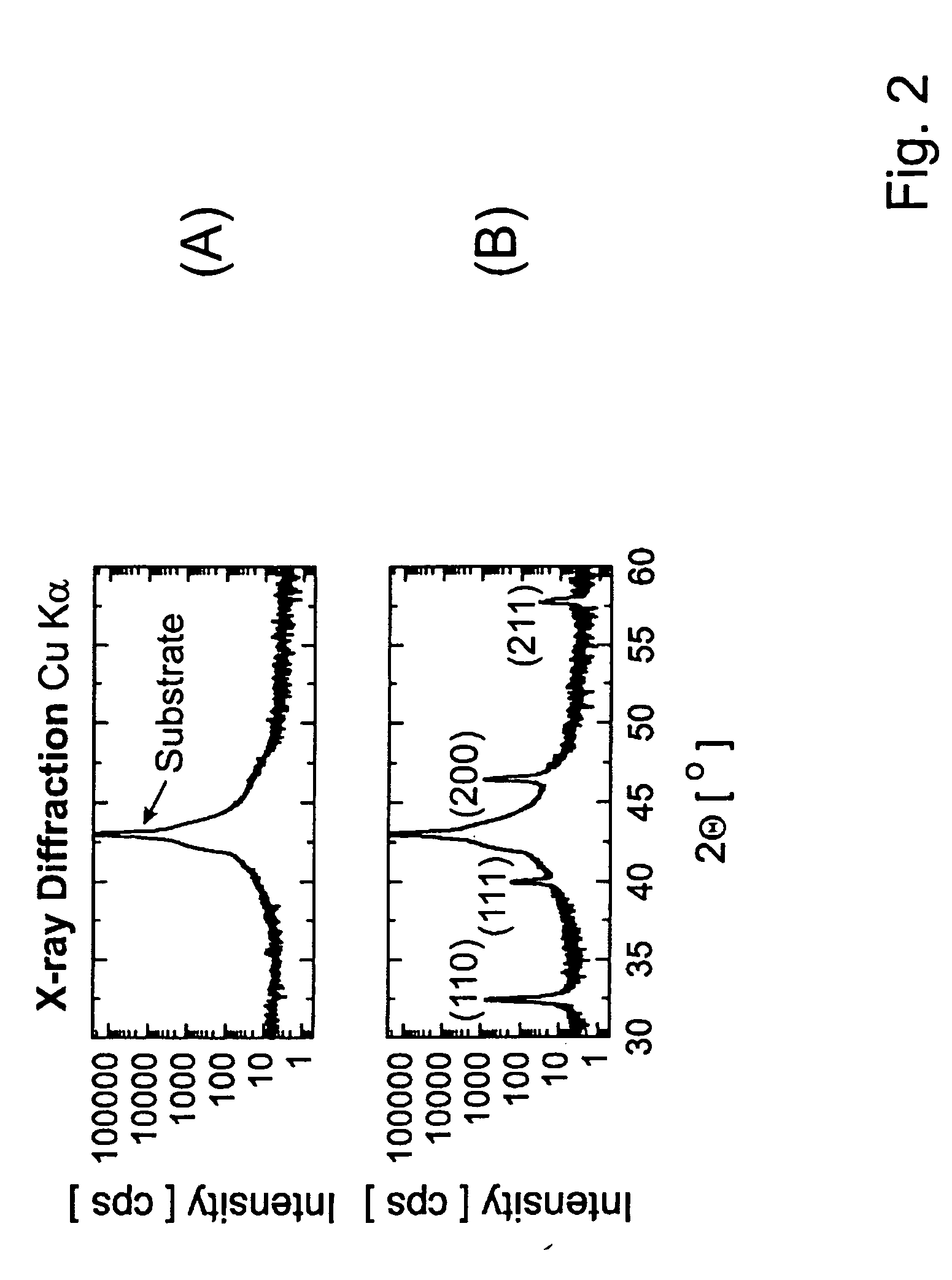Non-volatile resistance switching memory
a switching memory and non-volatile technology, applied in the field of non-volatile resistance switching memory, can solve the problems of inability to integrate this type of memory in the back end of the line (beol) process with standard complementary metal-oxide-semiconductor (cmos) technology, and the inability to use the deposition technique for standard cmos technology
- Summary
- Abstract
- Description
- Claims
- Application Information
AI Technical Summary
Benefits of technology
Problems solved by technology
Method used
Image
Examples
Embodiment Construction
[0019] The present invention provides a process for depositing a switching material that is switchable between at least a first conductivity state and a second conductivity state, each of the states being persistent. An example of a process comprises a step of depositing the switching material by a standard complementary-metal-oxide-semiconductor (CMOS) deposition technique at a temperature lower than 400° C. In other words, the switching material is deposited such as to form an essentially amorphous or poly-crystalline layer. That is, the switching material has an amorphous or poly-crystalline structure resulting from the used deposition temperature.
[0020] The process can be used for manufacturing microelectronic devices comprising a non-volatile resistance switching memory element between two electrodes. The switching material provides the functionality of the non-volatile resistance switching memory element, herein also referred to as switching member or switching layer. The swi...
PUM
| Property | Measurement | Unit |
|---|---|---|
| Temperature | aaaaa | aaaaa |
| Temperature | aaaaa | aaaaa |
| Temperature | aaaaa | aaaaa |
Abstract
Description
Claims
Application Information
 Login to View More
Login to View More - R&D
- Intellectual Property
- Life Sciences
- Materials
- Tech Scout
- Unparalleled Data Quality
- Higher Quality Content
- 60% Fewer Hallucinations
Browse by: Latest US Patents, China's latest patents, Technical Efficacy Thesaurus, Application Domain, Technology Topic, Popular Technical Reports.
© 2025 PatSnap. All rights reserved.Legal|Privacy policy|Modern Slavery Act Transparency Statement|Sitemap|About US| Contact US: help@patsnap.com



